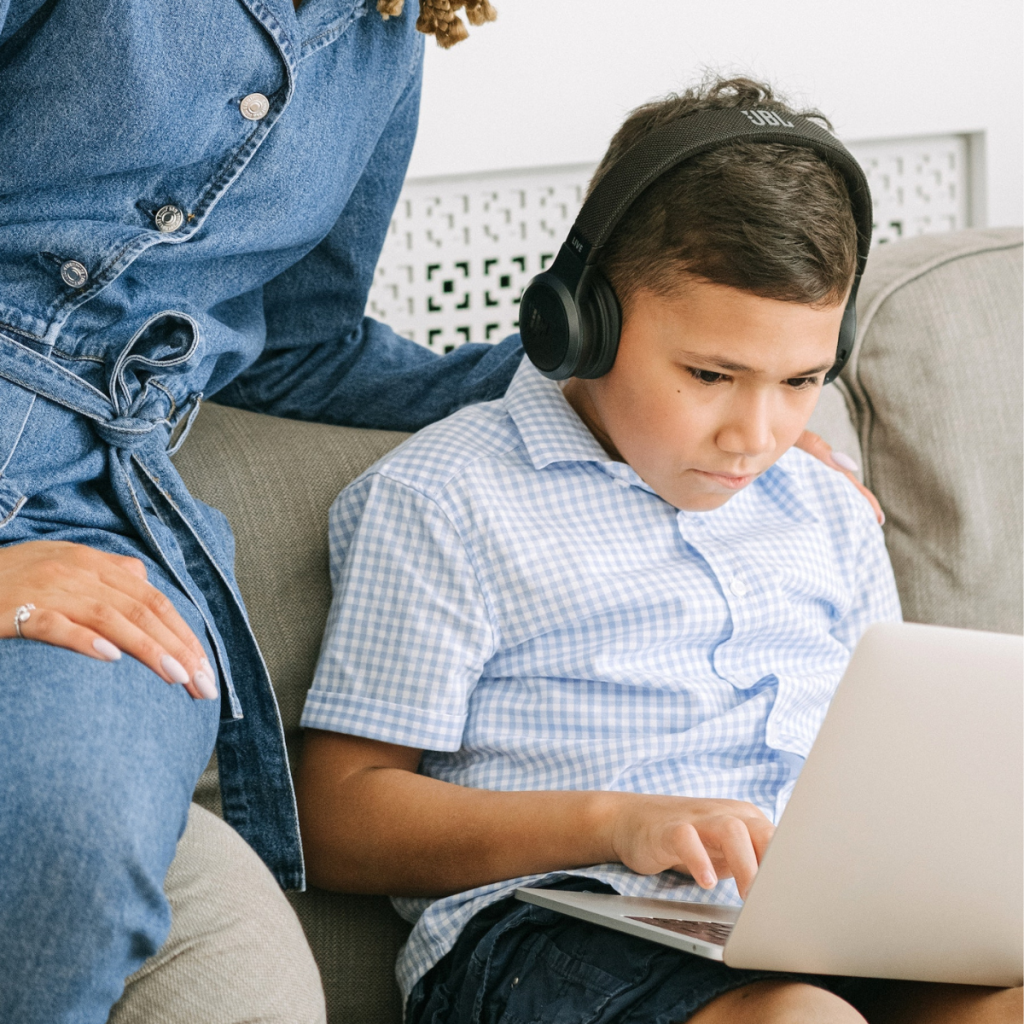Discover effective strategies and resources for teaching coding to 7-8 year old children.
How to Teach Coding to 7-8 Year Old Children
Teaching coding to young children may seem like a daunting task, but with the right approach, it can be an incredibly rewarding experience for both the teacher and the students. In this article, we will explore some strategies and resources to help you effectively teach coding to 7-8 year old children.
Understanding the Basics of Coding
Before diving into teaching coding, it’s important to have a solid understanding of what coding actually is. At its core, coding is the process of giving instructions to a computer to perform specific tasks. It involves writing lines of code using a programming language. By learning how to code, children develop problem-solving skills and logical thinking abilities that are crucial in our increasingly digital world.

What is Coding?
Coding, in simple terms, is like giving commands to a computer. Just like how we communicate with each other using languages, coding is a language that computers understand. Through coding, children can create their own interactive stories, animations, and even games!
When children code, they are essentially telling the computer what to do step by step. They write instructions that the computer follows to perform tasks. These instructions can be as simple as telling the computer to display a message on the screen or as complex as creating a game with multiple levels and characters.
Coding languages, such as Python, JavaScript, and Scratch, provide a way for humans to communicate with computers. Each language has its own syntax and rules that need to be followed. Just like learning any new language, it takes practice and patience to become proficient in coding.
Importance of Coding in Today’s World
Coding is no longer just a niche skill; it has become an essential part of our daily lives. From smartphones to cars, coding is behind almost everything we use. Teaching children coding at a young age will prepare them for the future, where digital literacy will be crucial for success in any field.
In today’s world, technology is advancing at a rapid pace. Understanding coding gives children the ability to not only use technology but also create it. By learning to code, children become creators and innovators, rather than just consumers of technology.
Coding also helps children develop important skills such as problem-solving, critical thinking, and creativity. When faced with a coding challenge, children learn to break down complex problems into smaller, manageable parts. They learn to think logically and come up with creative solutions. These skills are valuable not only in the field of technology but also in various other areas of life.
Furthermore, coding encourages collaboration and teamwork. Many coding projects require multiple people to work together to achieve a common goal. By working on coding projects with their peers, children learn how to communicate effectively, share ideas, and work as a team.
Lastly, coding opens up a world of opportunities for children. With coding skills, they can pursue careers in fields such as software development, web design, data analysis, and more. Even if they don’t choose a career directly related to coding, the problem-solving and logical thinking skills they acquire through coding will benefit them in any field they choose to pursue.
Preparing to Teach Coding
Now that you have a grasp of the basics, let’s talk about how to prepare yourself to teach coding to young children.
Teaching coding to young children can be a rewarding and exciting experience. It is important to ensure that you are well-prepared and equipped with the necessary tools and resources to make the learning process engaging and effective.
Necessary Tools and Resources
Start by familiarizing yourself with kid-friendly coding platforms and tools. Scratch and Blockly are excellent choices for beginners as they use visual blocks instead of text-based coding. These platforms provide a fun and interactive way for children to learn coding concepts and develop their problem-solving skills.
In addition to coding platforms, gather some resources like coding books and online tutorials to supplement your lessons. These resources can provide additional explanations and examples that can help reinforce the concepts taught in the classroom. They can also serve as a reference for students to explore coding further on their own.
Setting Up a Coding Friendly Environment
Create an engaging and welcoming environment for your young coders. Setting up a designated coding area can help create a sense of focus and excitement. Decorate the area with colorful posters related to coding concepts, such as algorithms, loops, and variables. These visuals can serve as a constant reminder of the coding principles and inspire creativity.
Provide your students with different resources and tools to experiment and explore on their own. This can include a variety of coding toys, such as programmable robots or coding board games. These hands-on activities can make the learning experience more interactive and enjoyable.
Encourage collaboration and creative problem-solving among students. Create opportunities for them to work together on coding projects or solve coding challenges as a team. This fosters a sense of community and allows students to learn from each other’s perspectives and approaches.
Remember, teaching coding to young children is not just about imparting technical skills. It is also about nurturing their creativity, critical thinking, and perseverance. By creating a supportive and inspiring environment, you can help your students develop a lifelong love for coding and empower them to become confident digital creators.
Simplifying Coding Concepts for Children
Now that you’re ready to start teaching, let’s explore some strategies to simplify coding concepts for young children.
Teaching coding to children can be a fun and rewarding experience. However, it is important to remember that complex coding concepts can be challenging for young minds. To ensure that children grasp these concepts effectively, it is crucial to break them down into smaller, more manageable parts.
Breaking Down Complex Ideas
When introducing coding to children, start with simple concepts like sequencing and loops. These concepts lay the foundation for understanding more advanced coding principles. By breaking down complex ideas into smaller components, children can gradually build their knowledge and confidence.
For example, when teaching sequencing, you can explain how coding is similar to following a recipe. Just like following the steps in a recipe to bake a cake, coding involves giving instructions in a specific order to achieve a desired outcome. By using relatable examples, children can easily understand and apply these concepts.
Using Visual Aids for Better Understanding
Visual aids can greatly enhance understanding for young learners. Children are naturally visual learners, and incorporating visual elements into coding lessons can make the concepts more engaging and accessible.
Utilize colorful diagrams, flowcharts, and animations to explain coding concepts. For example, when teaching loops, you can create a visual representation of a loop using arrows that loop back to the beginning. This visual representation helps children visualize how a loop repeats a set of instructions until a specific condition is met.
Visualizations make abstract ideas concrete and easier to grasp. They provide children with a visual framework to understand the logic behind coding. By incorporating visual aids, you can create a more interactive and immersive learning experience for children.
Fun Coding Activities for 7-8 Year Olds
Learning coding doesn’t have to be all serious – it can be a lot of fun too! Here are some engaging coding activities for 7-8 year old children.
When it comes to introducing coding to young children, interactive coding games are a fantastic way to make learning enjoyable. These games teach coding concepts in a playful and engaging manner, capturing the attention of young minds. Imagine a game where children solve puzzles to unlock new levels or go on coding adventures with their favorite characters. These interactive coding games not only teach the fundamentals of coding but also enhance problem-solving and critical thinking skills.
But it doesn’t stop there! There are numerous online platforms and apps available that offer age-appropriate coding games for 7-8 year olds. These games are designed to be both educational and entertaining, ensuring that children have a blast while learning valuable coding skills. With colorful graphics, exciting challenges, and rewards for progress, these games create an immersive learning experience that keeps children engaged and motivated.
Interactive Coding Games
Introduce coding through interactive games that teach coding concepts in a playful way. There are numerous online platforms and apps available that offer age-appropriate coding games. From solving puzzles to going on coding adventures, these games make learning coding an enjoyable experience.
Hands-on coding projects are another fantastic way to engage 7-8 year olds in coding. By allowing children to apply their coding knowledge to create something tangible, these projects foster creativity and problem-solving skills. Imagine the excitement on a child’s face when they build their own robot or design their own website!
Building robots is not only a fun activity but also a great way to introduce children to the world of robotics and engineering. With kits specifically designed for young children, they can learn how to assemble and program their own robots. These hands-on projects provide a hands-on experience that allows children to see the direct results of their coding skills.
Designing websites is another hands-on coding project that can ignite a child’s creativity. With simple drag-and-drop website builders, children can create their own web pages, customize layouts, and add interactive elements. This not only teaches them coding concepts but also gives them a sense of accomplishment as they see their website come to life.
Simple animations can also be a great way to introduce coding to young children. With easy-to-use animation software, children can create their own animated stories or characters. They can learn how to make objects move, change colors, and interact with each other. This hands-on approach to coding allows children to explore their imagination and express their creativity.
Hands-On Coding Projects
Encourage hands-on coding projects where children can apply their coding knowledge to create something tangible. Building robots, designing websites, or even creating simple animations can foster creativity and problem-solving skills.
Overcoming Challenges in Teaching Coding
Teaching coding to young children may not always be smooth sailing. Here are some common challenges you might face and how to overcome them.

Addressing Common Misconceptions
Children may have preconceived notions or misconceptions about coding. Take the time to address these misconceptions and explain the real-world applications of coding. Show them examples of how coding can be used to solve problems and make a positive impact.
Dealing with Frustration and Learning Blocks
Learning coding can be frustrating at times. Encourage a supportive learning environment where mistakes are seen as opportunities for growth. Teach children about the iterative nature of coding and emphasize the importance of perseverance. Break down tasks into smaller steps to help children overcome learning blocks.
With the right approach and resources, teaching coding to 7-8 year old children can be an exciting and enriching experience. So, get started on your coding adventure and watch your students’ creativity and problem-solving skills thrive!



